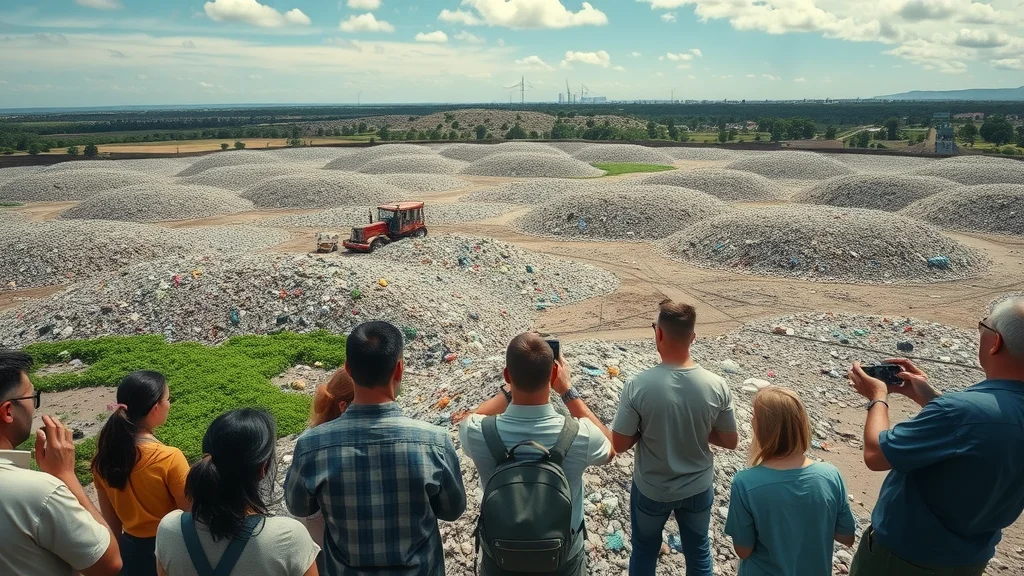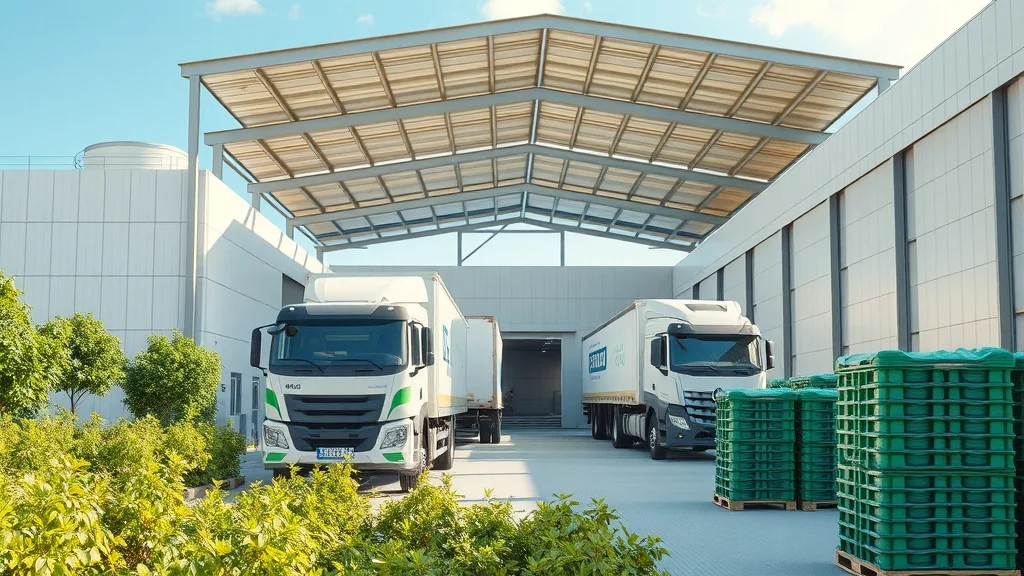Did you know? If we keep using plastic the way we do now, by 2050, there might be more plastic in our oceans than fish by weight. This fact shows just how important plastic waste recycling is for our planet and our future.
Discover the Power of Plastic Waste Recycling: A Surprising Look at the Numbers Startling facts: The global scale of plastic waste and why plastic waste recycling is crucial. Plastic waste recycling is not just a good habit—it's a crucial movement that can change our world. Every year, people around the globe produce over 300 million tons of plastic waste. Sadly, only about 9% of all plastic ever made has been recycled. Most of it ends up in our landfills, lakes, and oceans, polluting the environment and harming animals, plants, and people. Recycling plastic correctly helps reduce the need for new (virgin) plastic, cuts down greenhouse gas emissions, and saves precious resources.
When you use a recycling bin for your plastic bottles, bags, and food packaging, you're helping lower the amount of plastic that becomes pollution. For example, recycling just one plastic bottle saves enough energy to power a 60-watt light bulb for six hours. As more communities install special recycling bins and run education programs, the recycling rate is improving—especially for plastic bottles. But we still have a long way to go. That's why understanding and taking part in plastics recycling can make a big difference for everyone, everywhere. "By 2050, there could be more plastic in our oceans than fish by weight." – Ellen MacArthur Foundation What You'll Learn About Plastic Waste Recycling How plastic waste recycling works
Types of plastic suitable for recycling
Best practices to optimize recycling rate
Common misconceptions about plastics recycling
How you can influence change locally and globally Understanding Plastic Waste: Sources and Impact Definition and common sources of plastic waste
Impact of plastic waste on the environment and human health
Role of the recycling symbol in identifying recyclables Plastic waste is all the leftover plastic products—like bottles, bags, packaging, and containers—that we throw away after use. The most common sources are our homes (think plastic food packaging or drink bottles), stores, restaurants, and factories. Every day, we use plastic materials because they’re cheap and strong, but many of them are only used once and then tossed.
This wasted plastic is a huge problem, especially when it isn't recycled. Plastic pollution hurts wildlife that can swallow or get tangled in litter, and poisons soil and water as it breaks down. For humans, chemicals from plastic waste can end up in food and water, leading to health issues. Recycling symbols—those triangle-shaped icons on plastic products—help you identify which items can be recycled. When you see a recycling symbol on an item, it means that the product may be accepted by your local recycling program if sorted the right way. Types of Plastic: The Key to Effective Plastic Waste Recycling Type of Plastic
Recycling Symbol
Common Uses
Can It Be Recycled? PET (Polyethylene Terephthalate)
1 ♳
Water bottles, soft drink bottles, food packaging
Yes (most curbside programs) HDPE (High-Density Polyethylene)
2 ♴
Milk jugs, cleaning product bottles, toys
Yes PVC (Polyvinyl Chloride)
3 ♵
Pipes, shrink wrap, some food packaging
Rarely LDPE (Low-Density Polyethylene)
4 ♶
Plastic bags, bread bags, squeezable bottles
Some drop-off locations PP (Polypropylene)
5 ♷
Yogurt containers, bottle caps, straws
Sometimes PS (Polystyrene)
6 ♸
Foam cups, disposable plates, take-out containers
Rarely Other (Various)
7 ♹
Multi-layer packaging, sunglasses, some bottles
No How to interpret the recycling symbol
Why identifying types of plastic matters for plastic waste recycling The recycling symbol on plastic products tells you what type of plastic it is. They usually have a number from 1 to 7 inside the triangle. Knowing the type of plastic helps you and your community sort and recycle plastic materials the right way. For example, PET (number 1) is commonly recycled through local recycling programs, becoming new bottles or fabrics. But some types, like number 6 (Polystyrene), are rarely accepted because of recycling difficulties.
Sorting correctly keeps recycling streams clean, which means less waste, more recycled plastic, and a higher recycling rate. It's always a good idea to check with your city's recycling program and read the recycling symbol on packaging to make sure you’re doing it right!
As recycling technology advances, innovative companies are finding new ways to process even the most challenging plastics. For instance, recent investments in specialized recycling firms are accelerating breakthroughs in the industry—learn how a major funding boost is driving progress in closed loop plastic recycling solutions and what it means for the future of waste management.
The Plastic Waste Recycling Process: Step by Step Collection: Using the right recycling bins and recycling symbols. Sorting: Human and automated methods for separating types of plastic. Cleaning: The importance of preparing plastic bottles, plastic bags, and other recyclables. Shredding and melting: How recycled plastic is reprocessed. Pelletizing: Transforming waste into reusable material. The plastic waste recycling journey begins when you toss a used plastic bottle or bag into a recycling bin. First, workers collect recyclables from curbside recycling bins or special drop-off points. Next, the plastics are transported to a recycling facility. Here, powerful machines and skilled workers sort the items—often by hand and with technology like optical sorters—by type of plastic and color.
Once sorted, plastics must be cleaned to remove food, drink, and dirt because contamination can ruin a whole recycling batch. Clean plastics are then shredded into tiny pieces or flakes. These flakes are melted down to become pellets, called nurdles, which are the raw material to make new products such as more bottles, containers, or even clothes. Each step in the plastic recycling process helps reduce plastic pollution and brings used plastic bottles and bags back to life as useful new products. Plastic Waste Recycling: Bottles, Bags, and Beyond
Plastic Bottle Recycling: From the Recycling Bin to New Life High recycling rate for plastic bottles
What happens to recycled plastic bottles Plastic bottles are a recycling success story. In the United States and many other countries, recycling programs collect millions of plastic bottles every week. These bottles are sorted, cleaned, and shredded, then melted and formed into new products. Some become new drink bottles, others are used to make clothing, carpet, or even furniture. Thanks to the familiar recycling symbol on most bottles, it’s easy for people to place them in the correct recycling bin. The high recycling rate for plastic bottles is great news, but we can do even better by making sure every single bottle finds its way to recycling bins, not the landfill.
Recycling just one ton of plastic bottles saves over 7 cubic yards of landfill space and reduces greenhouse gas emissions. By choosing recycled plastic products, we also support the circular economy—a system where materials are reused instead of wasted. Next time you finish a sports drink or water bottle, make sure to put it in the recycling bin so it can start its journey toward a new life! Plastic Bag Recycling: Overcoming Challenges Why plastic bags complicate recycling
Solutions: Drop-off programs, alternatives, and the future of plastic bags Plastic bags present unique challenges for recycling. They are thin, lightweight, and can easily jam sorting machinery at recycling plants, causing delays and damage. Most curbside recycling programs do not accept plastic bags for this reason. However, special drop-off locations at grocery stores or community centers collect clean plastic bags, which are then recycled separately and turned into items like outdoor decking, benches, or new bags.
Innovations are underway to make plastic bag recycling easier, such as biodegradable bags and advanced sorting technology. Meanwhile, the best approach is to reduce the use of plastic bags by switching to reusable ones, and to recycle them at designated drop-off points whenever possible. By taking these simple steps, you can help keep plastic bags out of the environment and support smarter plastics recycling systems.
Boosting Recycling Rates: Strategies and Global Progress Current global recycling rates for plastic waste
Ways communities and nations encourage higher recycling rates
Role of recycling bins and recycling symbols in participation The global recycling rate for plastic waste is still relatively low, hovering around 9–15% depending on the country. However, thanks to education, easy-to-use recycling bins, and better recycling programs, this number is climbing. Many cities now provide colored recycling bins with clear recycling symbols, making it simple to sort recyclables at home and in public spaces. Encouraging people to use their recycling bins regularly can dramatically boost recycling rates for plastic bottles, bags, and containers.
Communities and governments are also working to inspire change through incentive programs, recycling challenges, and public awareness campaigns. For example, some towns reward residents who recycle the most, while others run school programs teaching kids about the circular economy and the value of recycled plastic products. Every recycled bottle or bag makes a difference, so take pride in every trip you make to your recycling bin—it’s part of a global effort for a cleaner, greener planet!
The Market for Recycled Plastic: Uses and Economic Impact Key products made from recycled plastic
Economic advantages of plastics recycling for industry and consumers Recycled plastic isn't just used for bottles and bags—it's part of a growing market delivering real economic gains. Items made from recycled plastic include t-shirts, backpacks, park benches, playground equipment, and even car parts! Using more recycled content helps companies save money on raw materials and reduces the environmental footprint of new plastic products. Plus, it creates new jobs in the recycling and manufacturing industries, helping build stronger local economies while reducing greenhouse gas emissions.
More businesses are joining the movement by choosing recycled plastic for their packaging and products, and governments offer incentives or laws encouraging the shift toward recyclables. When you buy products marked with a recycling symbol or made with recycled content, you support the circular economy and show demand for responsible production. This virtuous circle helps lower pollution, uses less virgin plastic, and makes our world more sustainable. "Recycled plastic is now a resource, not a liability, driving job creation worldwide." Common Myths and Misconceptions About Plastic Waste Recycling Addressing doubts about actual recycling rates
Clarifying the confusion around types of plastic and recycling symbols
Reusable vs recycled plastic: What’s more sustainable? Some people wonder if plastic waste recycling really works, or if plastics just end up in landfills anyway. In truth, while not all plastics are recycled equally, recycling rates are climbing—especially for easy-to-identify plastics like bottles. Another myth is that the recycling symbol on a product means it’s always recycled. Actually, every community’s recycling program is different: always check which types of plastic your local service accepts and clean them before recycling.
There’s also confusion over whether it’s better to use reusable or single-use recycled plastic items. Reusable items—like sturdy water bottles or shopping bags—are more sustainable, especially when they’re made from recycled plastic. Each time you choose to reuse, you reduce the need for new materials and help the planet breathe a little easier. Remember: recycling is most effective when combined with reducing and reusing whenever possible!
Plastic Waste Recycling at Home: Tips for Success Do’s for recycling plastic at home: Rinse out plastic containers and bottles before placing them in the recycling bin.
Check the recycling symbol and number—only recycle what’s accepted locally.
Flatten or squash bottles to save space in your recycling bin.
Drop off plastic bags at store bin locations instead of curbside bins. Don’ts for recycling plastic at home: Don’t put greasy or food-covered plastics (like pizza boxes) in the recycling bin.
Don’t put plastic bags or wraps in curbside recycling unless your area accepts them.
Don’t recycle items stained with chemicals or substances that can't be cleaned off. How to identify recyclable plastics using recycling symbols: Look for the triangle symbol with a number; check your local recycling guide.
Best practices for using recycling bins: Keep bins clean, sort items properly, and avoid overfilling bins so they can be collected easily. Global Innovations in Plastic Waste Recycling Breakthrough technologies in plastics recycling
Innovative solutions for hard-to-recycle waste
The future of plastic bottle and plastic bag recycling Exciting breakthroughs are happening in plastics recycling worldwide. Scientists and companies are inventing new ways to recycle plastic materials that used to be too hard or too dirty to process. For example, some machines can now convert plastic bags into fuel or new types of plastic products, closing the loop on materials that often ended up as trash.
Innovators are also developing chemical recycling methods, which break plastic back down to its base building blocks—making it possible to recycle them again and again without losing quality. The future could see entire cities powered by high-tech plastic recycling systems, and creative ways to reduce our plastic waste, like edible packaging and smart recycling bins that detect the type of plastic you throw in. The fight against plastic pollution is moving fast: by learning, supporting, and using these new technologies, we can help shape a cleaner world for tomorrow.
How to Contribute: Personal and Community Actions That Matter Reducing plastic use and proper recycling
Community initiatives and recycling bin programs
Working with local governments to improve plastics recycling The best way to help is to reduce how much plastic you use in the first place. Say no to single-use plastics like straws, bags, and cutlery. When you must use plastic, make sure to recycle it using the correct recycling bin and follow local rules. You can join or start a recycling program at your school, church, or neighborhood to help everyone get involved.
Many local governments want to increase their recycling rate, so they offer special recycling bins, large collection days, and even prizes for communities with high participation. By working together with your community and leaders, you can help encourage more plastics recycling and support a circular economy—making sure fewer plastics become pollution and more are transformed into useful recycled products.
People Also Ask: Plastic Waste Recycling — Your Questions Answered
[[paa_question_1]] [[In-depth answer to [[paa_question_1]] about plastic waste recycling. Answer should be a clear, simple explanation using real-life examples or analogies if helpful, and should be 3-5 sentences.]] [[paa_question_2]] [[In-depth answer to [[paa_question_2]] about plastic waste recycling. Answer should be detail-rich, busting any common myths, and expanding on practical steps or facts. 3-5 sentences.]] FAQs: Everything You Need to Know About Plastic Waste Recycling Which types of plastic can always be recycled?
PET (#1) and HDPE (#2) plastics, like water bottles and milk jugs, are accepted by nearly all recycling programs. Always check the recycling symbol and your local guide, as some plastics are only recycled in certain places. What happens if plastics are not cleaned before recycling?
Dirty plastic bottles, containers, and bags can spoil an entire batch of recyclables, making them all unusable. Always rinse containers—it's a simple step that ensures more plastic gets recycled. Do recycling symbols guarantee local recycling?
No, the recycling symbol identifies the type of plastic, but not all types are accepted in every area. Check with your local recycling program and follow their sorting instructions for best results. Key Takeaways for Effective Plastic Waste Recycling Understanding plastic types and recycling symbols is critical
Plastic bottle and bag recycling requires special attention
Higher recycling rates depend on public participation
Recycled plastic has great economic and environmental value Inspiring Quotes from Industry Leaders on Plastic Waste Recycling "If we treat plastic as a precious resource rather than waste, our actions will reshape the planet’s future." – Dr. Samantha Ford Conclusion: The Ongoing Evolution of Plastic Waste Recycling The journey and future possibilities of plastic waste recycling
How educated actions can drive global change Plastic waste recycling is changing quickly—stay informed, keep recycling right, and you’ll be part of a movement transforming our world.
If you’re inspired to deepen your understanding of how recycling is evolving, consider exploring the broader impact of innovative investments and partnerships in the recycling sector. Discover how strategic funding and collaboration are accelerating the shift toward a circular economy and creating new opportunities for sustainable growth. By learning about these industry-wide advancements, you’ll gain valuable insight into the future of plastic waste management and how your efforts connect to a larger global movement. Take the next step and see how impactful initiatives are shaping tomorrow’s recycling landscape by reading about transformative investments in plastic recycling technology.
Ready to amplify your positive impact? Become a AMPLIVO / CORSAIR Plastic Independent Affiliate Join a movement making a real difference in plastic waste recycling. https://jointhecleanup.com/seamandan

 Add Row
Add Row  Add
Add 




Write A Comment